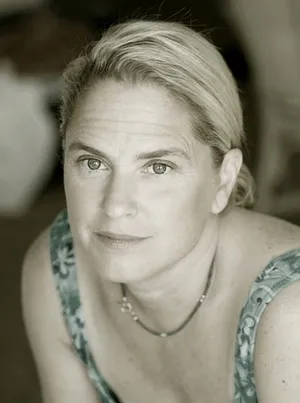Body Art During World War II: From the Lyle Tuttle Tattoo Art Collection
Step outside of the Air and Space Museum and into the Lyle Tuttle Tattoo Art Collection in San Francisco, California to explore the symbolism of tattoo body art during World War II.
:focal(720x560:721x561)/https://tf-cmsv2-smithsonianmag-media.s3.amazonaws.com/blogging/featured/Owen_Jensen_WW2_Aviator_Skull_Eagle_WW2_icons.jpg)
For the museum’s blog series commemorating the 75th anniversary of the end of World War II, I have focused on the Museum’s art collection and the embedded meanings in the paintings of Robert Jordan and Audrey Flack in relation to the war. This next blog brings us outside of our museum and into the Lyle Tuttle Tattoo Art Collection in San Francisco, California to explore the symbolism of tattoo body art during World War II.
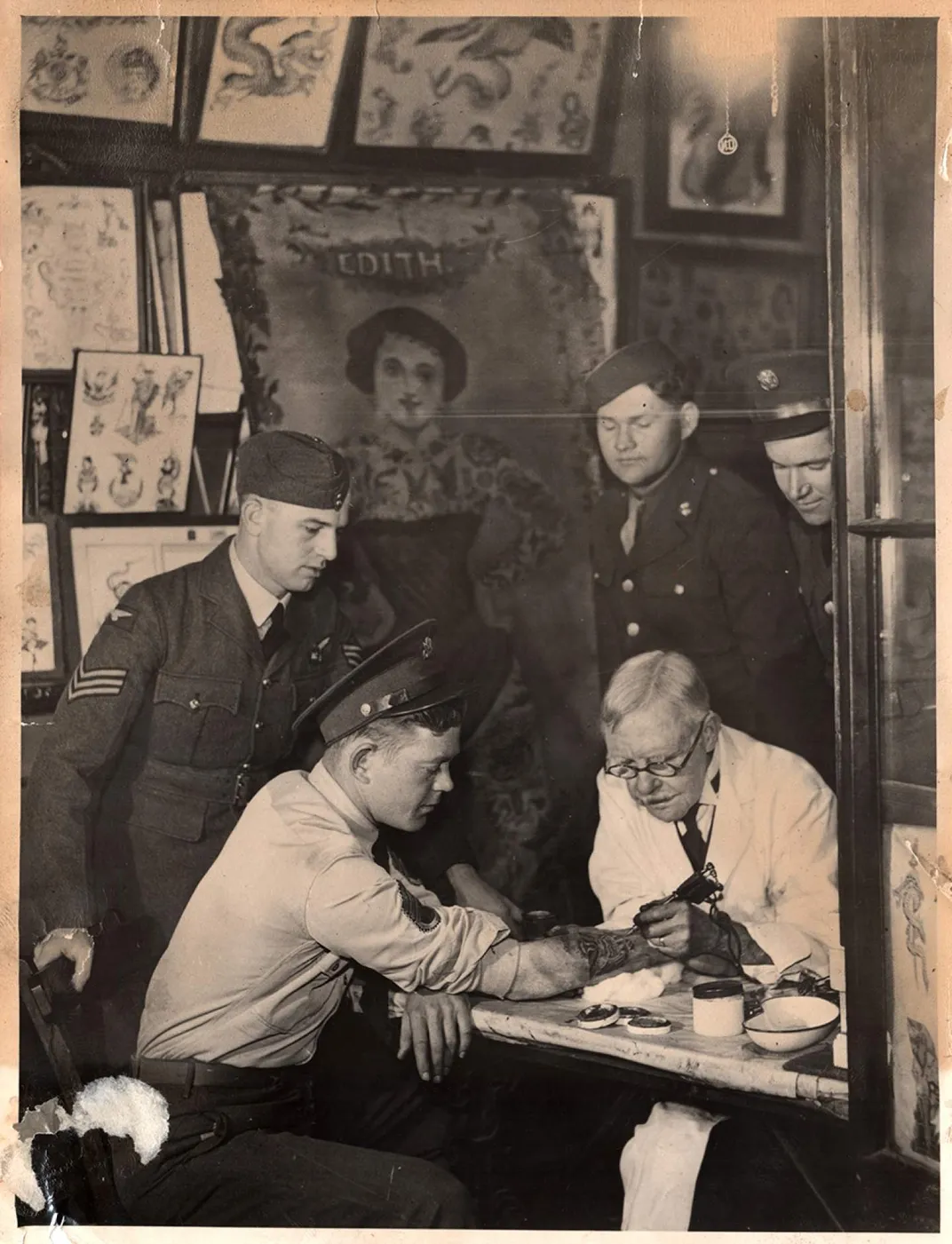
The Lyle Tuttle Tattoo Art Collection
In the mid 1940s, a young Lyle Tuttle (1931–2019) was lured into the then-underground culture of tattoo art after seeing the intriguing tattoo designs on U.S. servicemen returning home from World War II. At 14 years old, he received his first tattoo from Duke Kaufman and then others from Bert Grimm, both legendary figures in tattoo culture, before embarking on his own career as a tattooist. By the early 1970s, Tuttle had become a renowned tattoo artist in San Francisco with loyal clients including Janis Joplin and many other popular singers and performers. He is attributed with bringing tattoo culture into U.S. mainstream society.
With a passion for preserving the history of a then-underappreciated practice and artform in the U.S., Tuttle amassed an unrivaled private tattoo collection with ephemera in the thousands from around the world and dating back to the fifth century. The Lyle Tuttle Tattoo Art Collection contains over 1,000 artifacts of tattoo equipment alone, including an early autographic printer pen made by Thomas Edison, thousands of tattoo business cards (signature relics in tattoo culture), photographs, storefront signage, and thousands of images of original flash art. Flash art are the designs created by tattooists and replicated into tattoos. These images drawn on artist board or paper advertise the artist’s style and skill and hung on the walls or in windows of tattoo shops to attract clientele. Examples of flash art in Tuttle’s collection from the World War II era include that of tattooists Bert Grimm, Sailor Bill Killingsworth, Red Farrell, Owen Jensen, Sailor Jerry, Lou Normand, and Milton Zeis, to name a few. Though heralded now in tattoo culture, these artists initially ran their businesses “underground” from basements, arcades, elevator shafts, and backroom broom closets when tattoos were not in fashion. There is much to be written about Lyle Tuttle and these early artists by contemporary social and art historians. The rare imagery of the flash art created during the WWII era, which influenced the youthful Tuttle, also deserves closer examination. To learn more about body art during the war, I spoke with Danielle Boiardi, the curator of the Lyle Tuttle Tattoo Art Collection. The following excerpts are edited from our recent conversation.
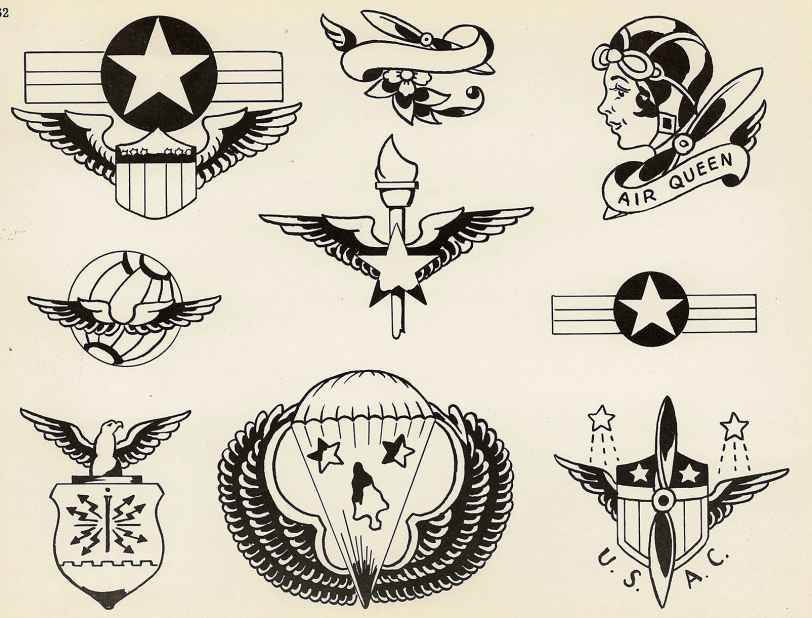
CR: Why were military service personnel and airmen pursuing tattoos during World War II and what was their significance?
DB: As early as World War I, service men were getting their military ID numbers, and later social security numbers, tattooed on their bodies as a means of identification in case they were injured or killed in service. Between WWI and WWII, tattooing began to take off, but it was still an underground culture in the United States. But in terms of tattoos and military servicemen, which in ancient times were considered warriors, tattoos were used as a symbolic gesture. Lyle [Tuttle] referred to the warrior tattoos as a symbol to “stand in testimony to the men that they were.” In reference to the World War II servicemen, in most cases many would get tattoos before they would actually ship out overseas to the war. They were very proud, with so much patriotism certainly in the United States, as we started to enter the war. They were willing and expecting that they may very well lose their lives. So, they wore these tattoos as a symbol of courage, honor, bravery… These are tattoos that really bolstered their morale and gave them a sense of comradery, a permanent mark that they could take with them.
CR: Can you talk about some of the different types of tattoos and their meaning?
DB: One type of tattoo they were getting was a “sweet heart” tattoo that was depicted with the swallow. The swallow represented the journey across the seas, because the swallow is a bird that can go long distances and return home. So for example, if they had a sweetheart and her name was Marie, they would get a ribbon with a heart, and a swallow, to serve as a companionship symbol to keep their sweethearts close to them while away at war.
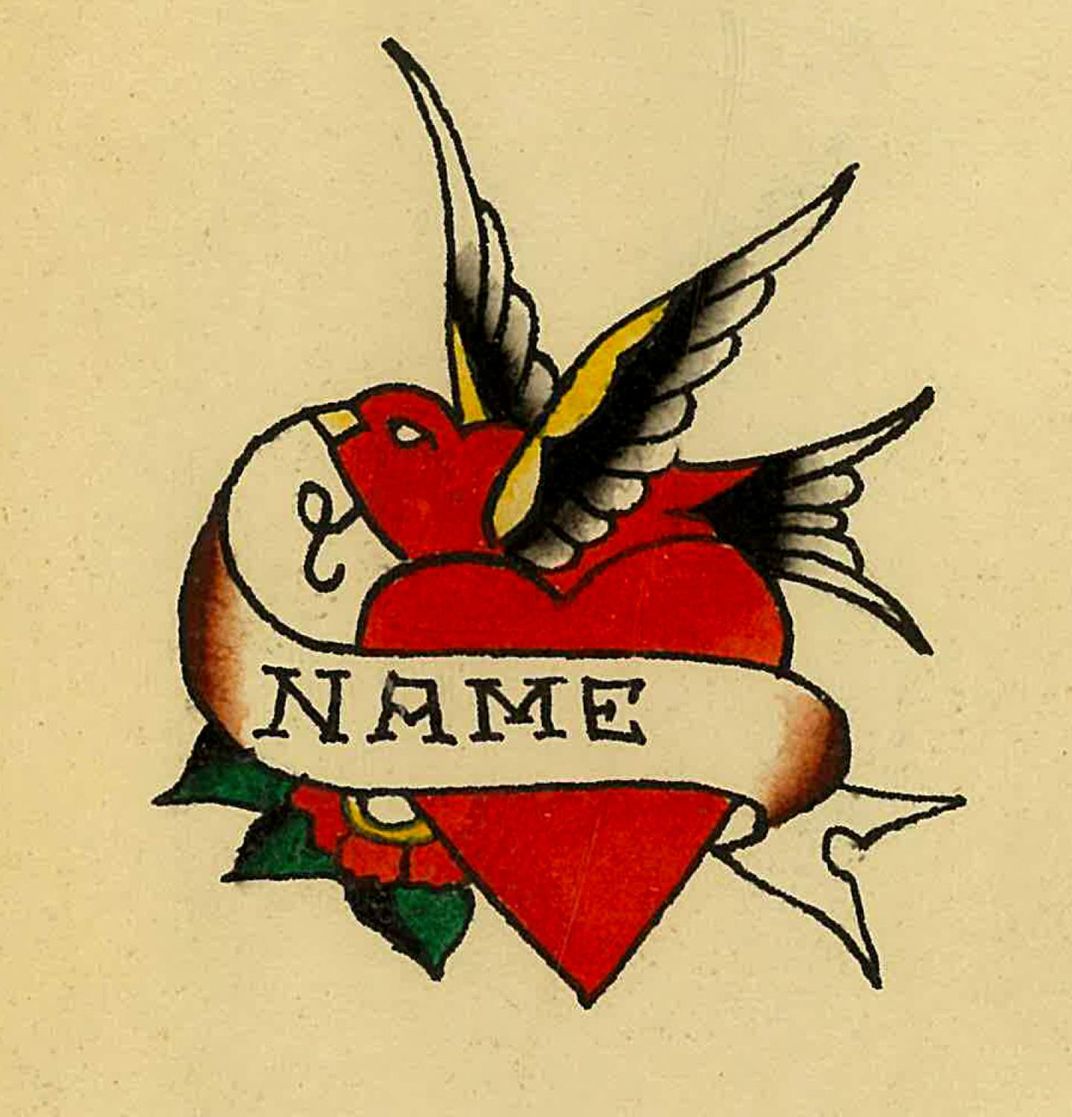
Then of course there were tattoos for patriotic fervor. Tattoos that were meant to bolster their spirits [and] give them a sense of brave comradery. “Death before Dishonor” [was featured in] the most famous four or five tattoo motifs for World War II. You would have the dagger, a dagger with a snake, sometimes you would have a dagger through a heart, or a dagger through a skull. …Women were going into the factories and in northern California, there was so much nationalistic culture for ship building and war bonds. And the Rosie the Riveter era. …All these women that are basically leaving their home from making pies and rearing children, are getting into the [war] effort to support our boys over there. And that’s what I think about when I see a tattoo like “Death before Dishonor.” We are going to protect the future of the United States, our freedom, and our liberties.
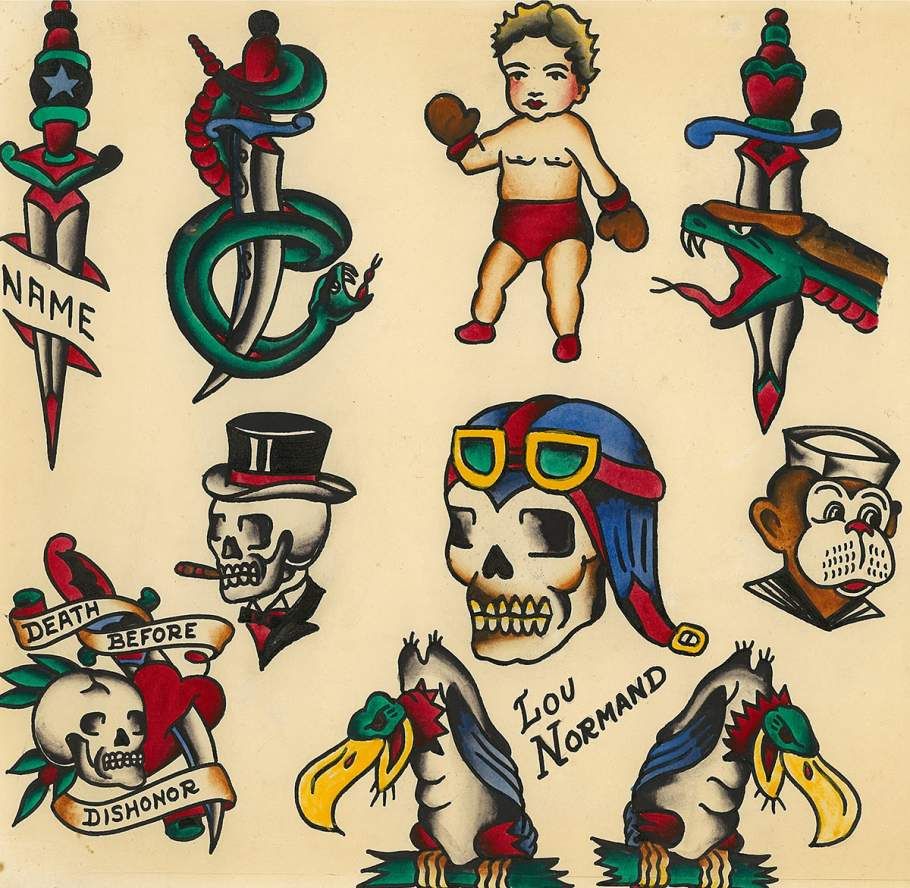
CR: What can you tell me about some of the aviation-related imagery?
DB: The eagle with the American flag on top of the bomb in Lou Normand’s aviation sheet is corresponding with the nationalism of the eagle and the dropping of bombs by very brave airmen in World War II. The artists were trying to incorporate symbols that didn’t need a lot of explanation—certainly not between military men who knew each other and served together. For the skull with wings in “Flying Death” or skull with an aviator’s cap and goggles, it meant to communicate, “I am tough stuff, don’t mess with me.” Many servicemen also waited to [get] a tattoo from their experience until after the war to show which unit they served.

CR: Today tattoos are popular for both men and women. Were women donning tattoos in the 1940s?
DB: There were not many women getting tattoos in the early days of World War II. Tattoos were almost exclusively done on men. Any women that were getting tattoos were either living on the fringes of society, maybe ladies of the night, or they were performers, like the great Betty Broadbent (1909–1983). In regards to the tattoos for the servicemen, sometime they were getting tattoos of Pin-Ups [images of glamorized female models in often sexualized poses that were “pinned” or thumbtacked to the wall] and this idea of having a constant companion and also showing that off to their bunk mates or trench mates. Tattoo design in general mirrors trends happening in social society, culture, and throughout time and even mirrored women’s hairstyles in [pin-up] designs.
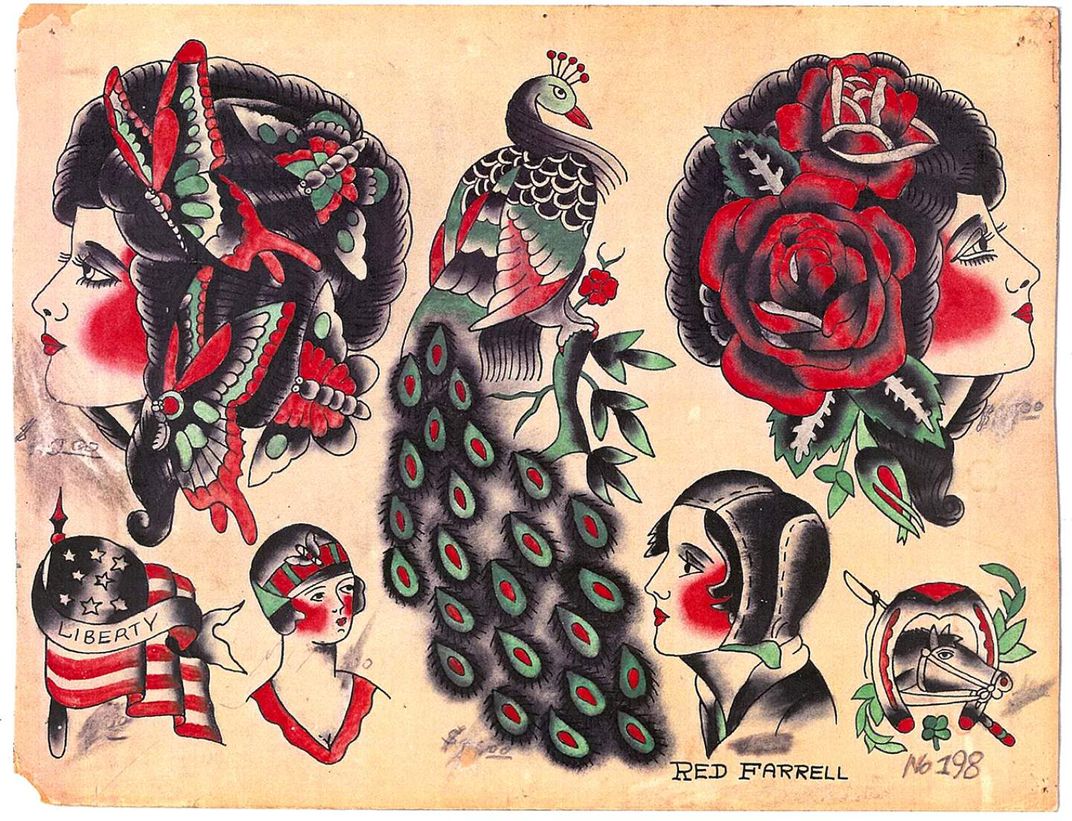
CR: Can you tell me about other unusual tattoos used by servicemen?
DB: There also was a whole other genre of tattoos that were done for comic relief—where servicemen would have a little dog that would be placed in an armpit, and say Joe Smith could lift up his arm pit and give his buddy a giggle because the dog would be licking his little behind, or something silly.
CR: What is the “Rose of No Man’s Land”?
DB: The “Rose of No Man’s Land” is meant to thank the field nurses and the nurses who were saving lives during military time…because it took ungodly amounts of courage for them to be where they were and taking care of the servicemen who in many times, certainly in World War II, were losing limbs and [suffering from ]blast injuries. So, the “Rose of No Man’s Land” is about the appreciation of the female nurses that were the rescuers of so many of the servicemen.
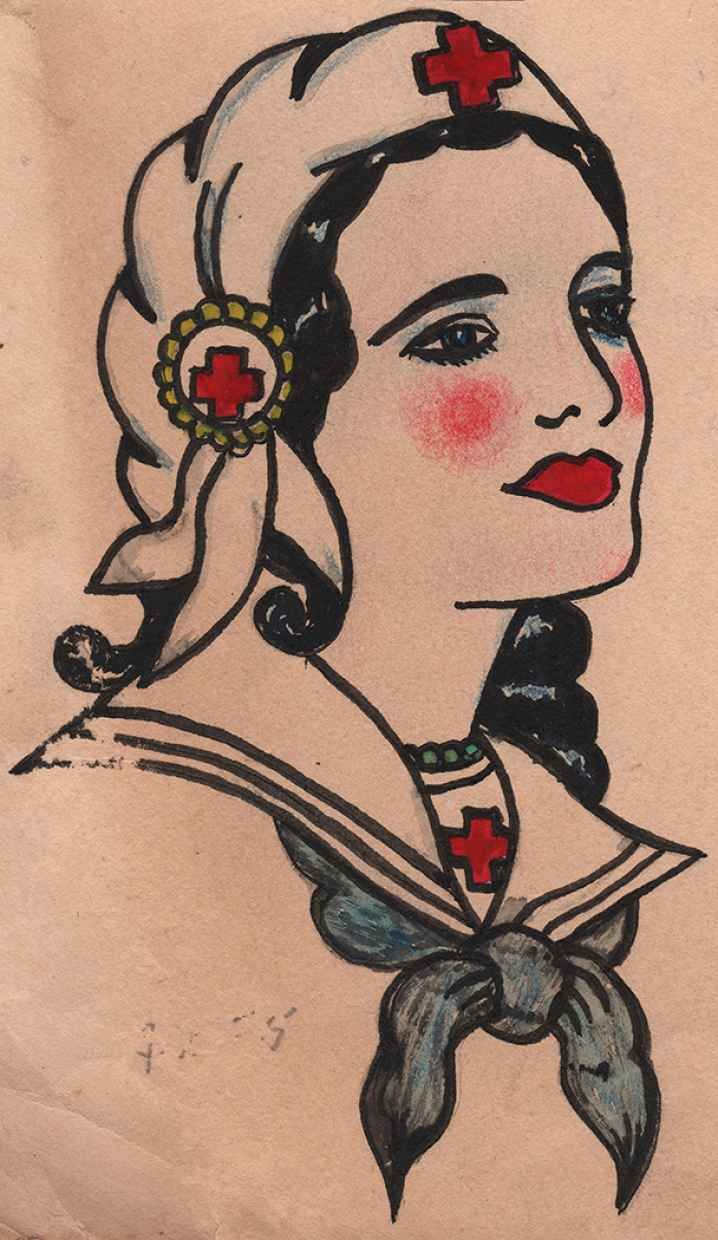
CR: Some of the tattoo art seems to be destination related. Can you talk about those works?
DB: Many of the designs in Lyle’s collection were created as a proud way to show where soldiers attended boot camp or did their training. And then of course as you get deeper into the conflicts of WWII, such as in the Pacific and certainly for servicemen that were part of Pearl Harbor, they were paying homage to lives lost in Pearl Harbor.
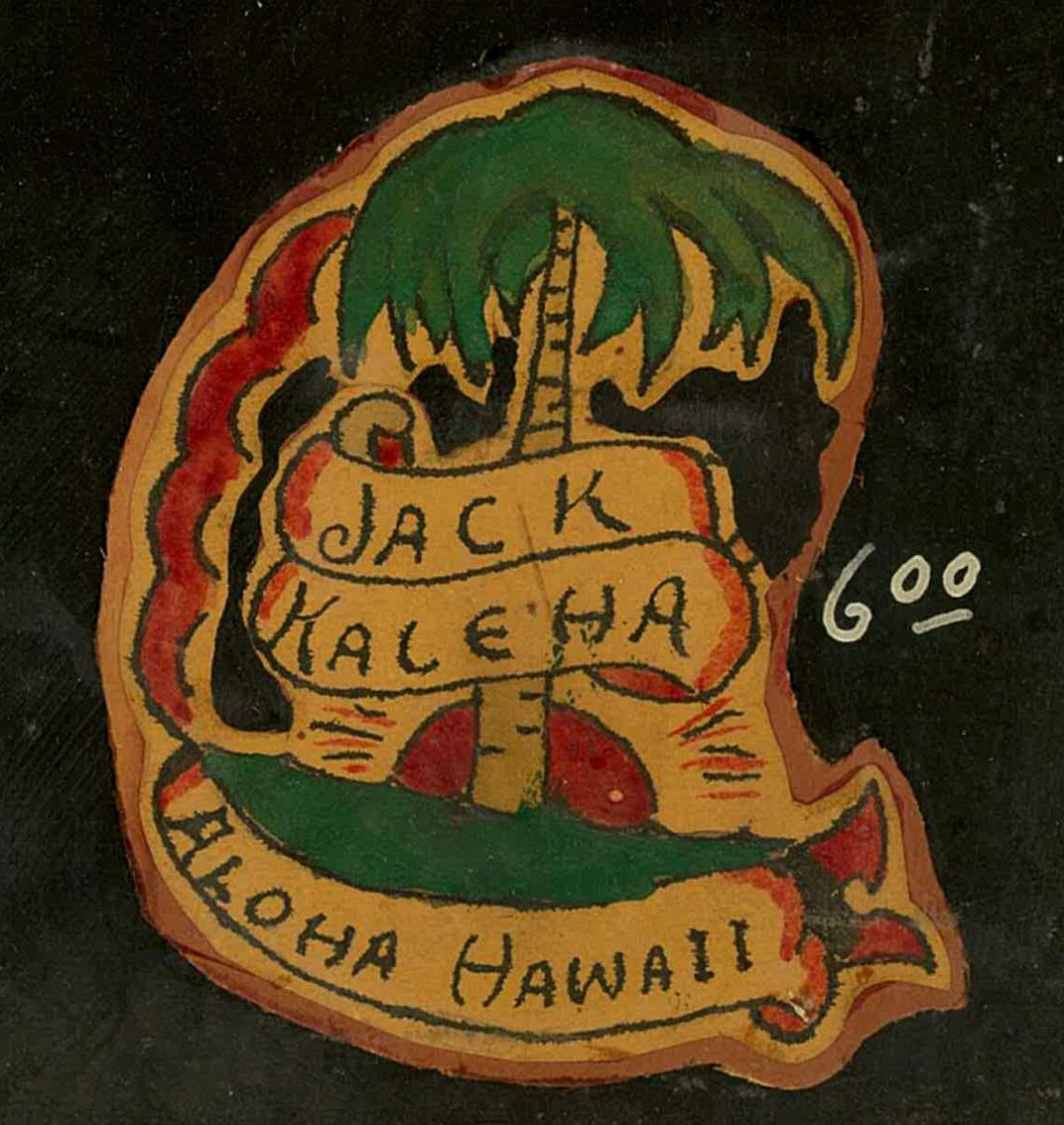
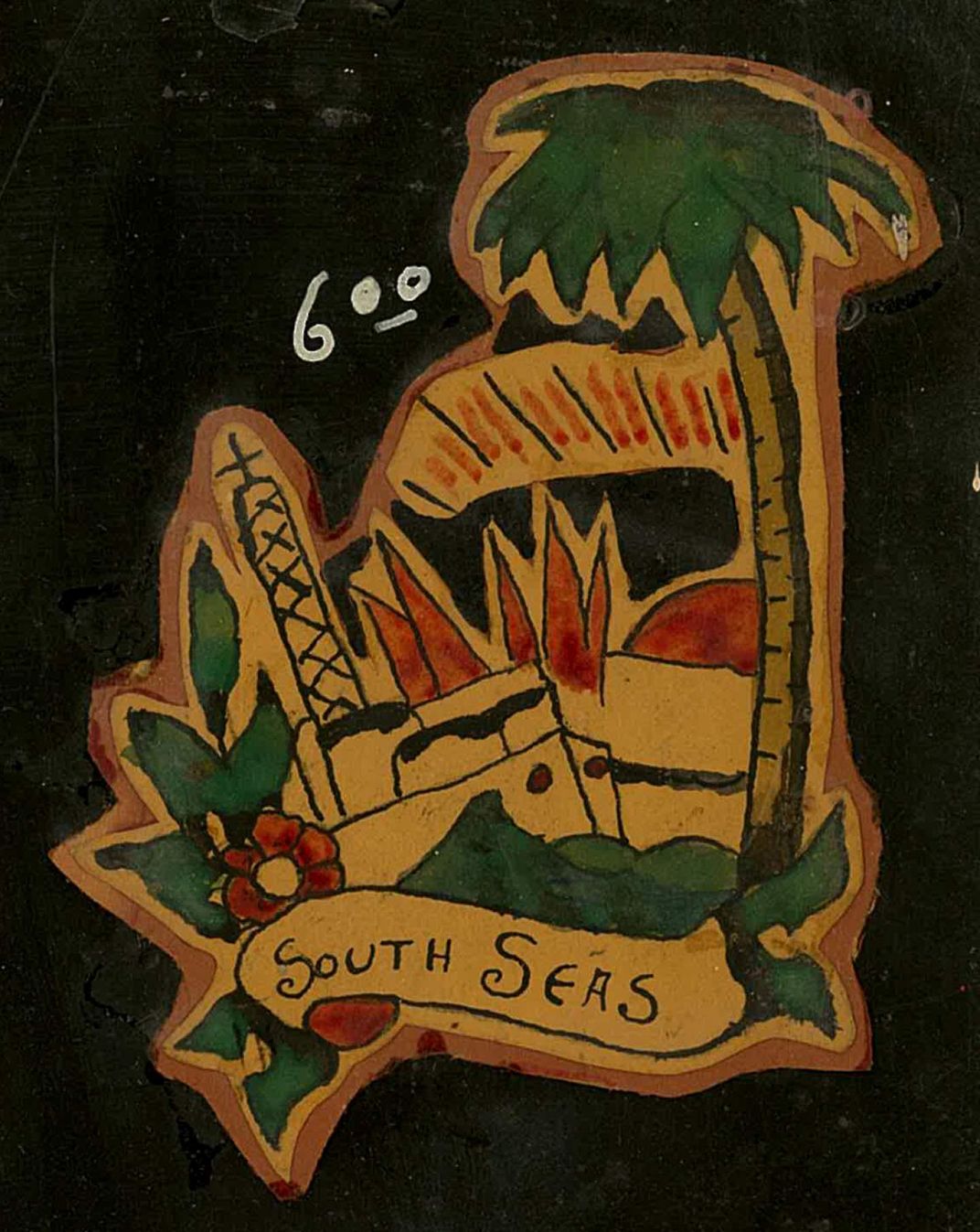
CR: As we have recently celebrated the 75th anniversaries of V-E Day (Victory in Europe Day and V-J Day (Victory Over Japan Day), can you talk about the symbolism of the “V” through tattoos?
DB: Most people are familiar with the V for Victory European origins and [Winston] Churchill and Britain’s turning it into a unifying symbol for Allied victory. But the symbol and its graphic strength with morse code detail then became part of culture, graffiti, poster art, and even costume jewelry. It makes sense to me that such a strong and somewhat mysterious symbol would crossover into tattoo designs, which [frequently] celebrated military code in every way, for every branch. The V for Victory was an iconic code for strength, unity and hope during WWII, and tattooing since ancient times, for ancient and modern warriors, has always been a language of code and important cultural symbolism.
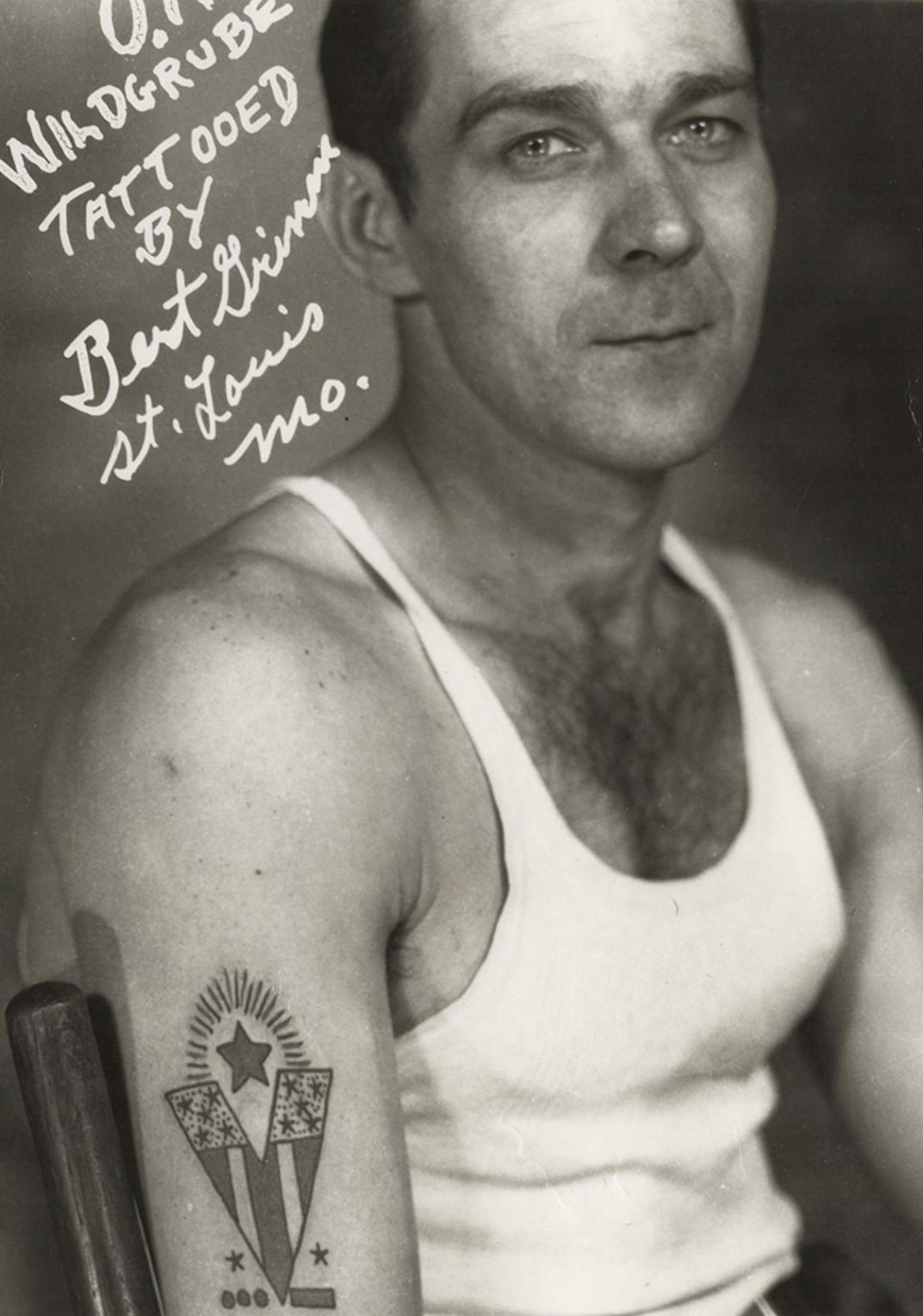
My conversation with Danielle Boiardi only scratched the surface of the designs in tattoo culture during the 1940s, but I gained a wider appreciation and understanding of the range of artistry exhibited and how tattoos served a higher purpose, especially for those who risked their lives at war. Tattoos during World War II told personal stories through the selection of images, whether a tribute to a loved one, a symbol of comradery for a service branch, or an emblem of bravery or freedom. The images served as a vernacular language amongst military servicemen, which communicated shared beliefs and sometimes even comic relief during times of crisis. A permanent mark of body art was (and still is) a form of self-expression and served as an unwavering companion that provided comfort during the war in the air, at sea, and in the trenches. For the fortunate who returned home, their tattoos were a permanent memory and a symbolic reflection of their service in World War II.
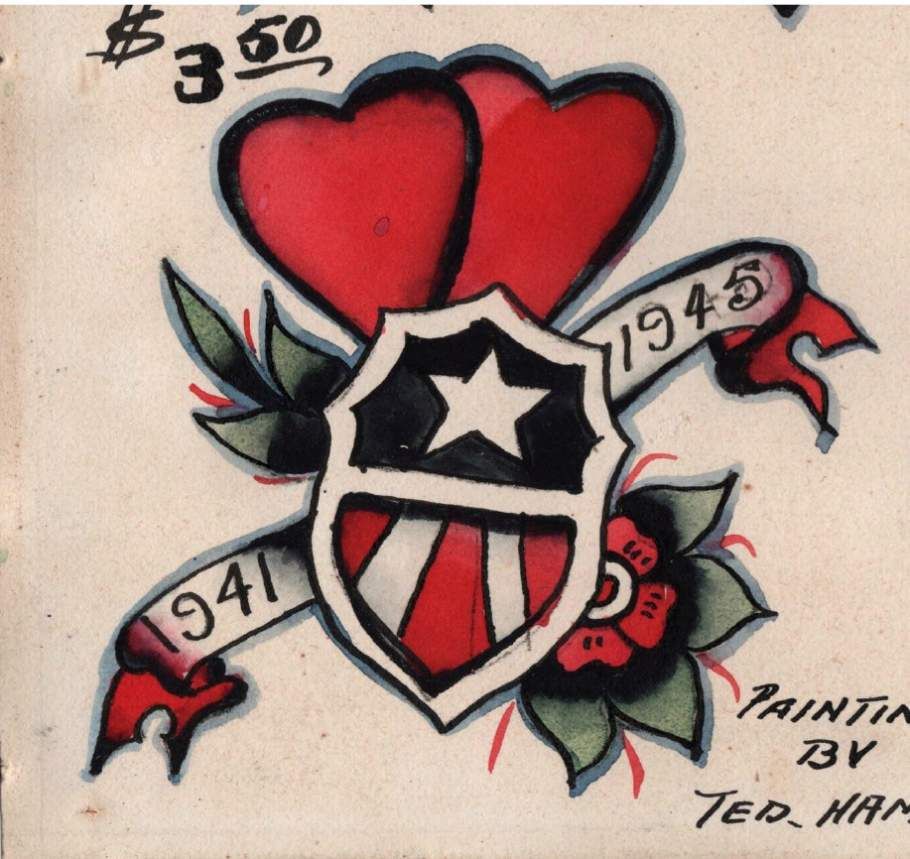
Special thanks to Danielle Boiardi for her interview and permission to use images from the Lyle Tuttle Tattoo Art Collection. Reproductions from this blog are restricted and not authorized for public usage. Please contact https://lyletuttlecollection.com/history for permissions.
Carolyn Russo is a museum specialist in the Aeronautics Division and the curator of the art collection.

